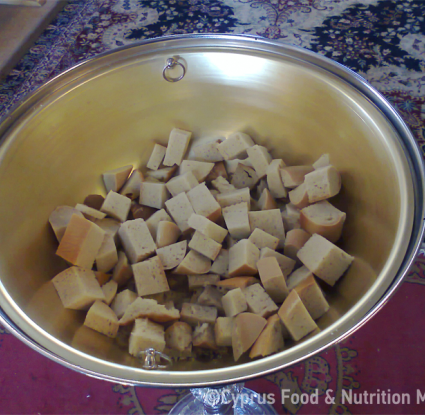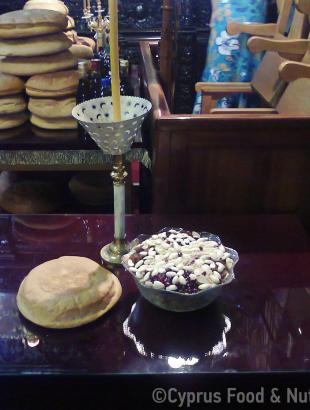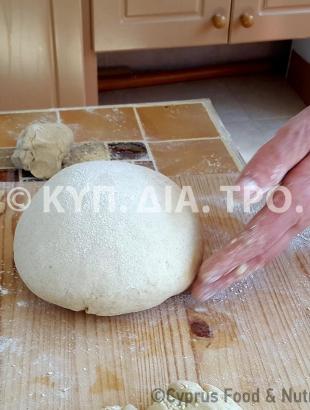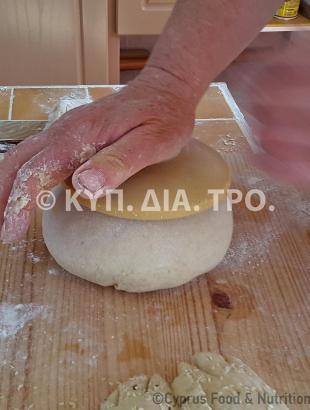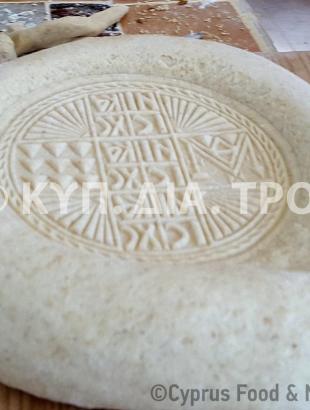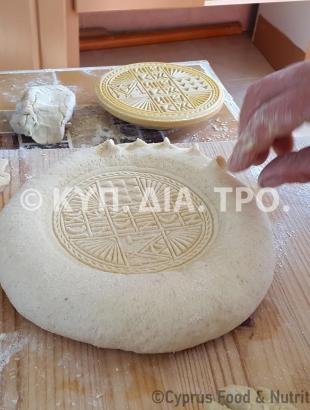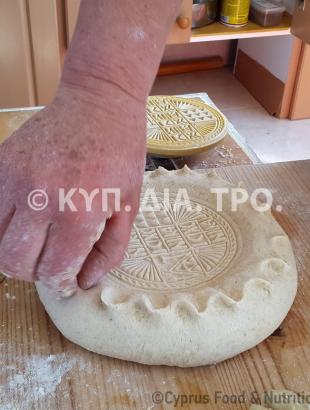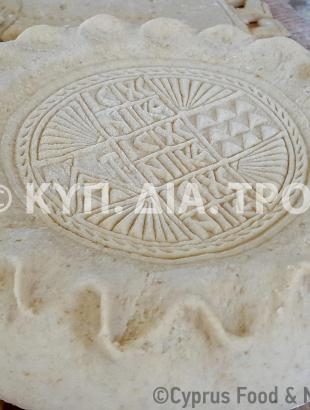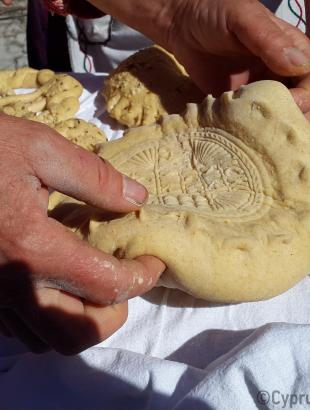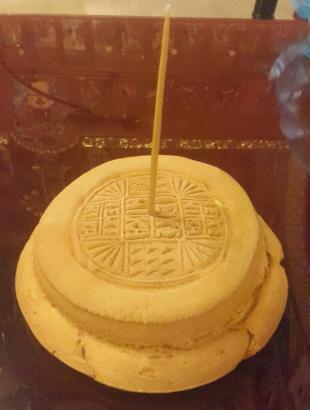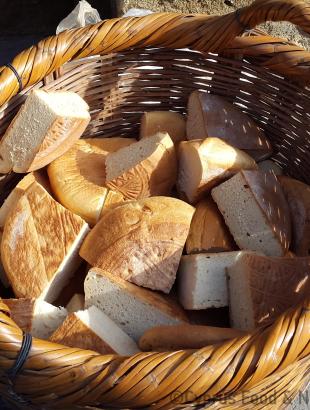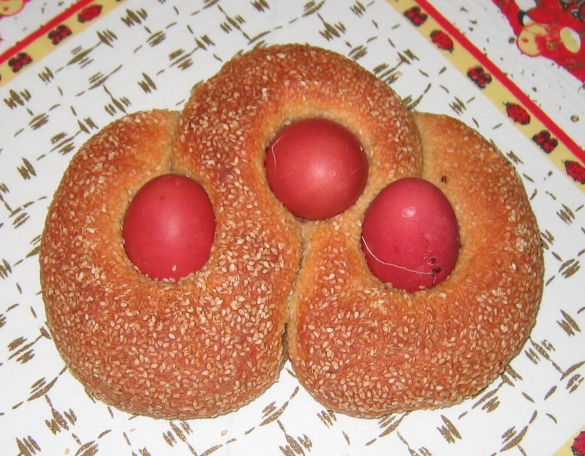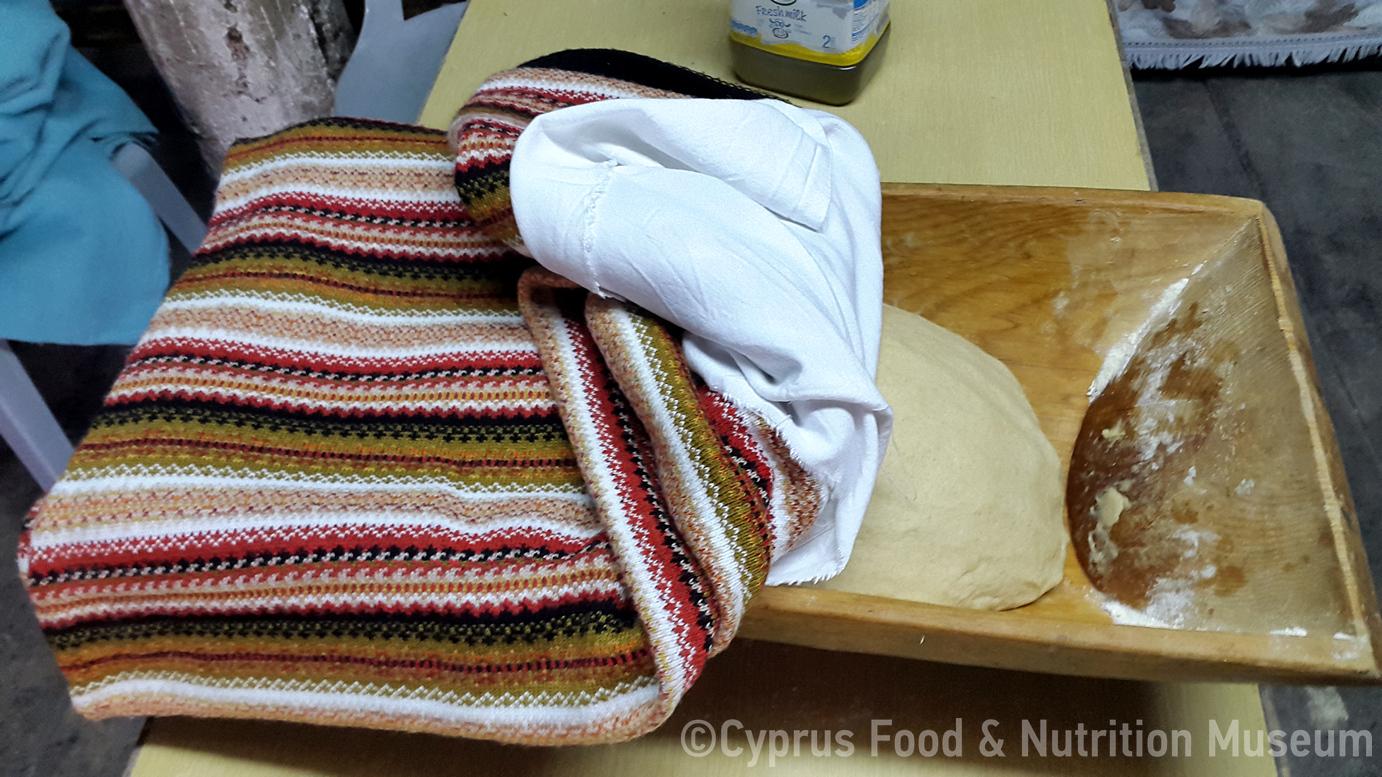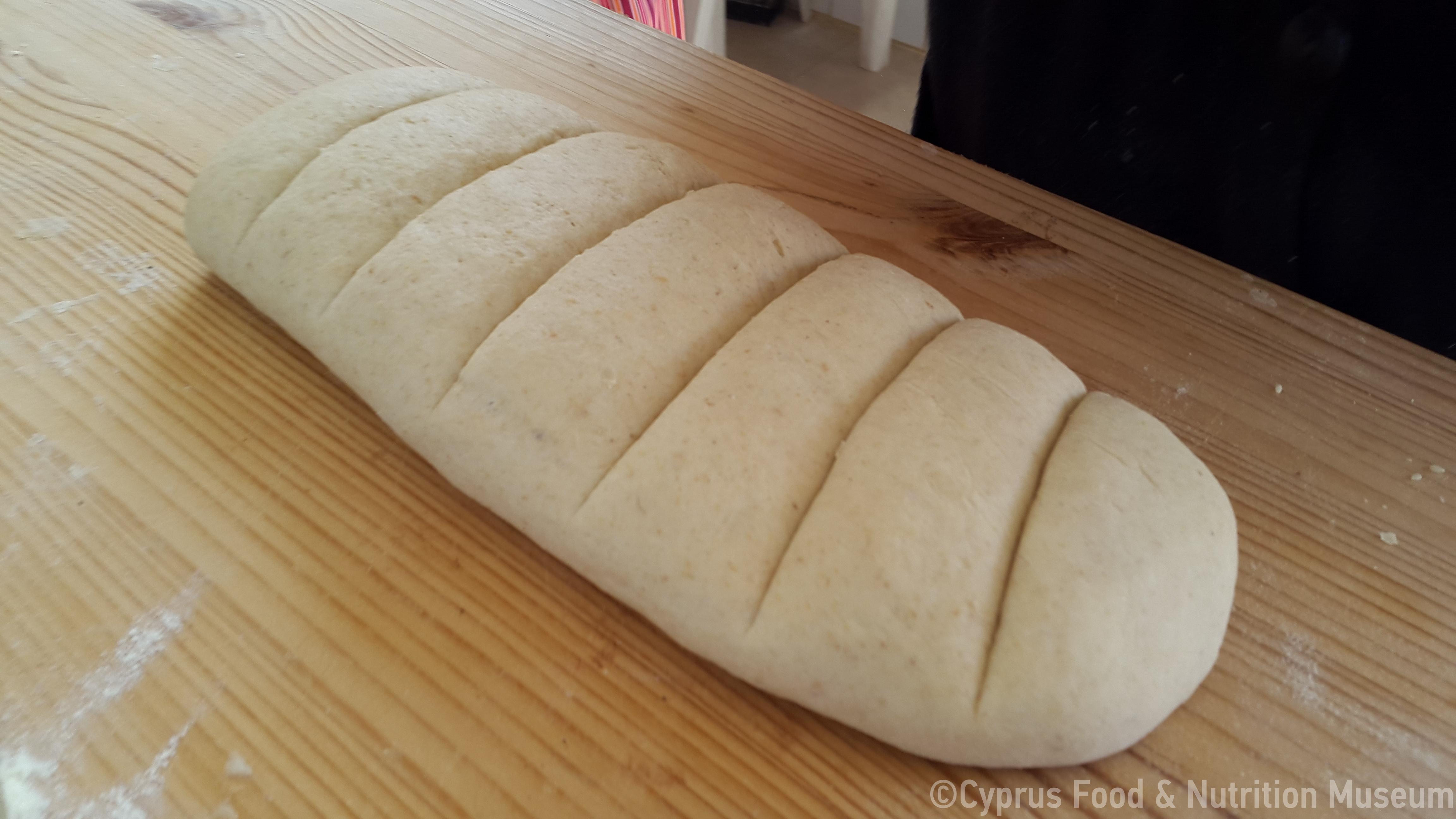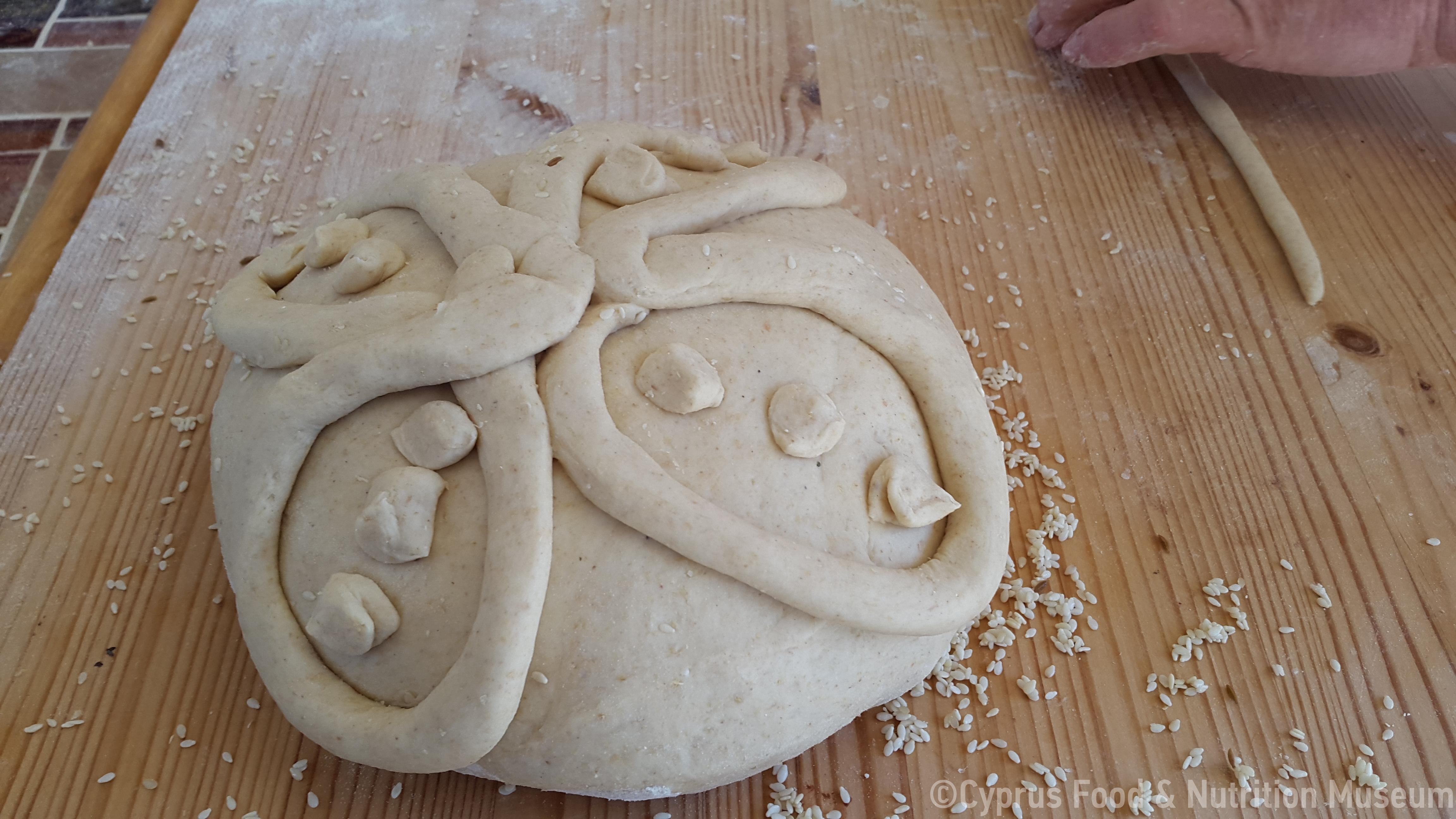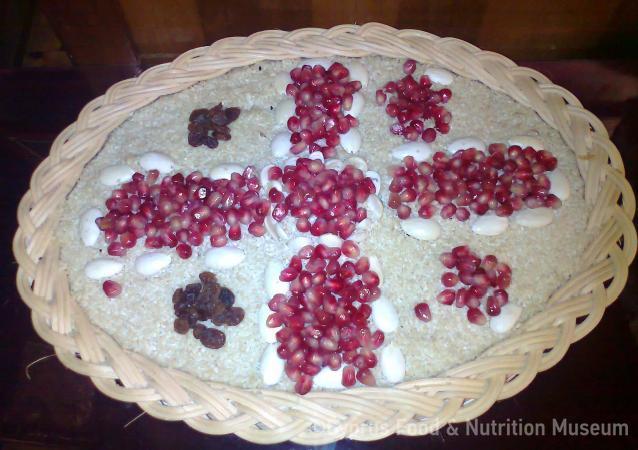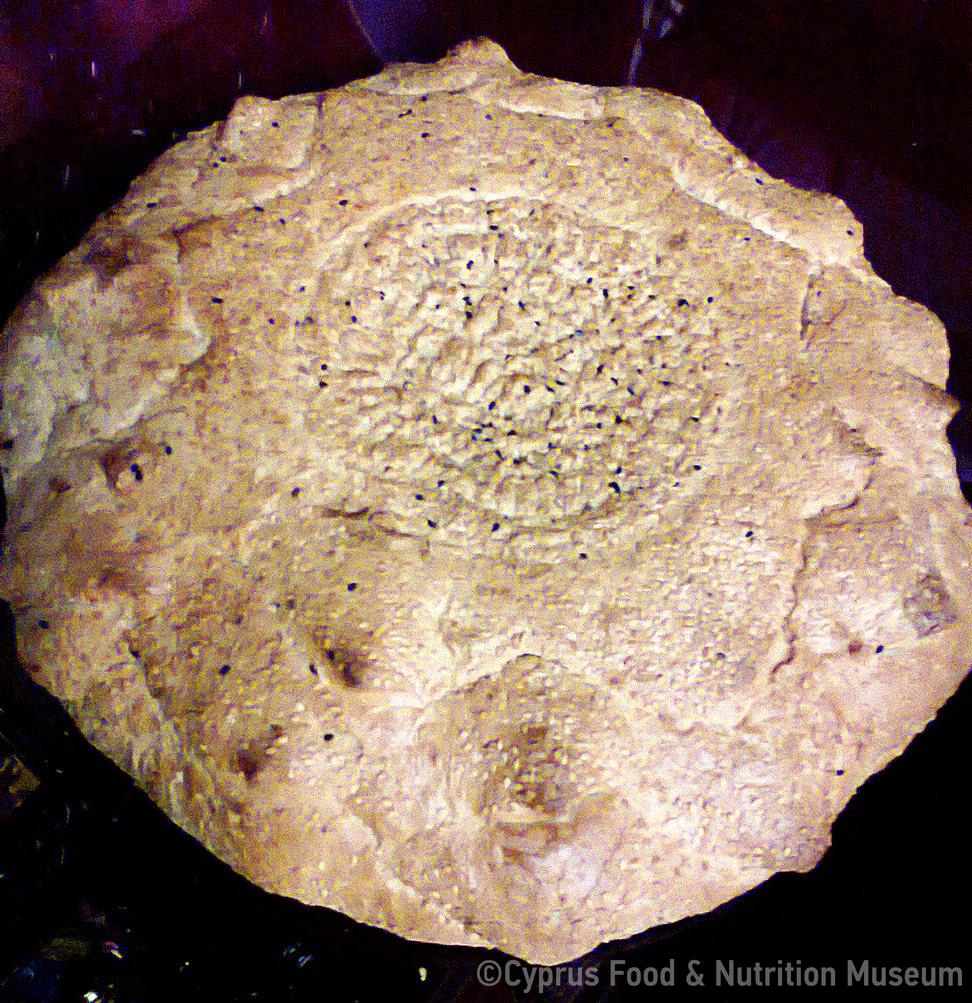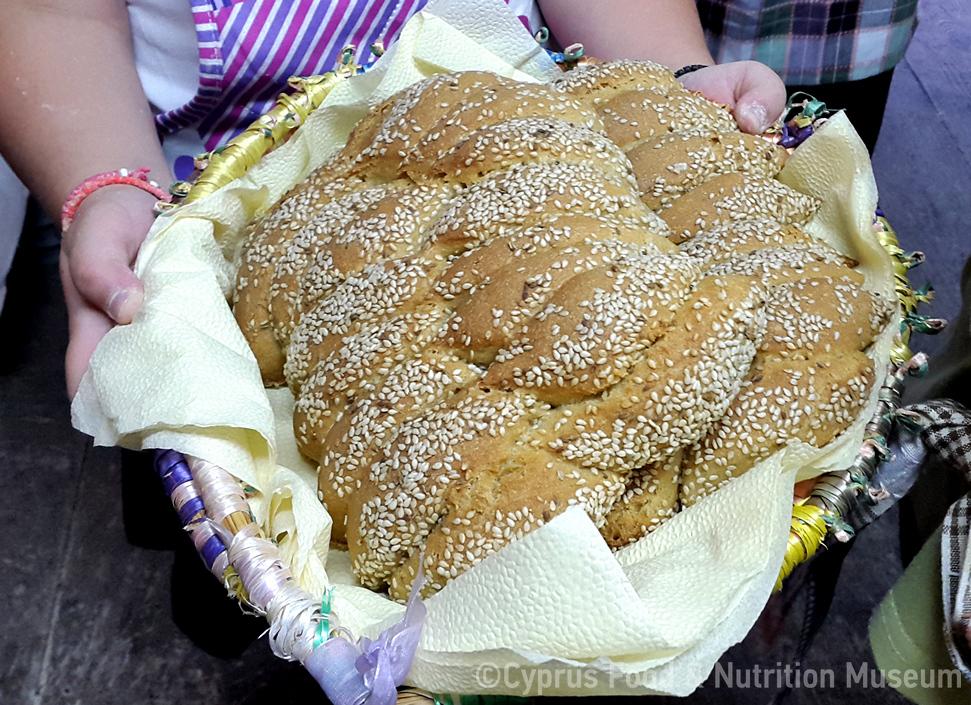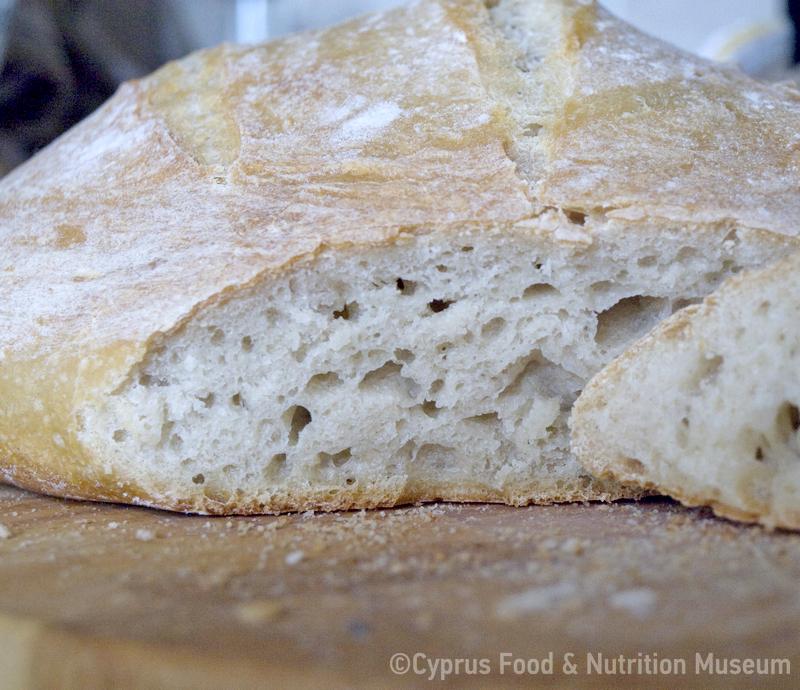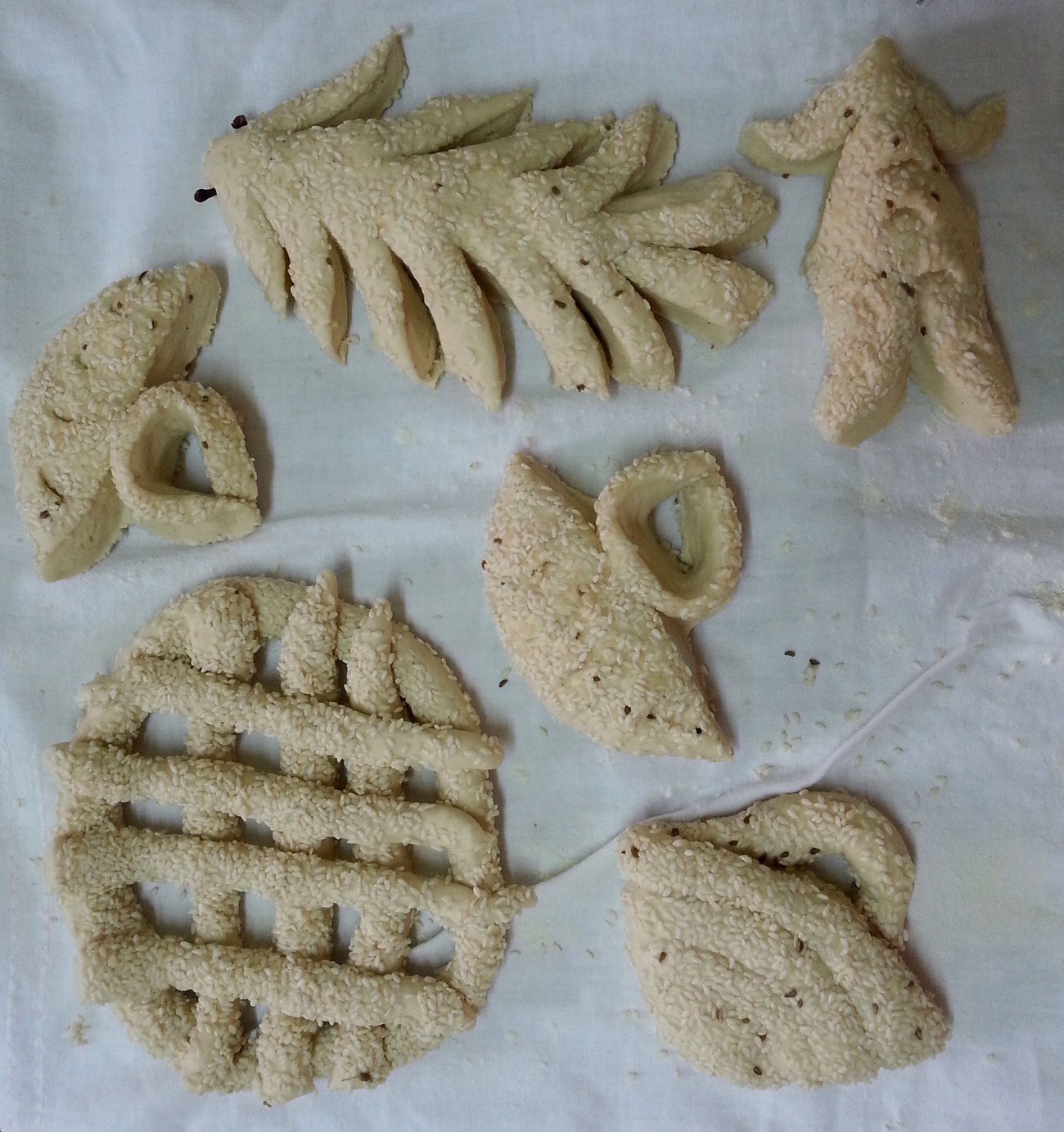Artos was prepared on special occasions like Saints' Days, Christmas, Easter, weddings and memorial services as an offering to the church.
Name - Origin
Άρτος, πρόσφορον.
Artos is a special bread for church celebrations, memorials (Xioutas 1981, 188-189) / "the bread offered in church, together with kollyva" (Pavlides 1985, entry άρτος, 337)) / special white bread prepared by housewives on religious festivals such as Christmas, Easter, saints' feasts and offered to the church for consecration (Kypri 1983 [2003²], entry άρτος,ο, 54; Kypri - Protopapa 2003, 68-84). This bread was also necessary during a marriage church ceremony (Kypri - Protopapa 2003, 206).
As Xenophon P. Pharmakidis notes in his Glossary: "The Cypriot people never call market bread as artos, but psoumin (psomi)". A common phrase was and still is: 'I will knead the artous (pl.)' (Kypri 1983 [2003²], entry άρτος,o, 54).
"In Cyprus, artos is called only the bread that is intended for the church; in earlier times artos was kneaded and baked at home and usually decorated with a cross. The five large artos (pl.) offered to the church by the celebrators are called pentartin. Usually one of these five artos is offered back to the celebrator by the priest' (Pavlides 1985, entry άρτος, 337).
Although artos is a word used in every household, the church uses the words prósforon or próssoron (Xioutas 1981, 188-189).Árti (pl.) are also called prósfora, pannys̆ídes and katharótati árti (pure breads). In medieval times, arti were called afráta or afratítzia. In the area of Karpasia, this type of bread is still called 'afránda'. Leontios Machairas in his chronicle on white wheat bread uses the word mouflettía (Kypri - Protopapa 2003).
In Rizokarpaso, prosforo, is called afranda. The smaller size of this bread is called afrandoúdkia (Panaretos 1963, 158). The name is derived from the Greek word áhranda (άχραντα), meaning undefiled (Petrou-Poeitou 2013, entry Αφράντες, 29).
The word "áhranda" is used to describe the bread offered by the celebrators to the church (ahranda < ahrandos = undefiled) (Pavlides 1985, entry άχραντα,η, 106).
"Pentartin" is the offering of five artos (loaves of bread) to the church (Kypri 1983 [2003²], entry άρτος,o, 54).
Prosforo (the wedding bread)is the holy communion bread given to the bride and groom during the marriage service; it was also called koulloúri toú gámou (Kypri - Protopapa 2003, 206).
Artos bread was prepared using white flour, using selected wheat or semolina. Women would sift the flour twice to make artos as white as possible. The flour was kneaded very well and the dough would become firm. The dough was cut and given a round shape. They would rub the top of it well with their hand to make it smooth. After forming the loaves, they would make small protrusions on the edge, which were called tsímbin or tsímbes. They would then seal the surface in the centre with a seal that read ΙΣ ΧΡ ΝΙ ΚΑ. After allowing the loaves to rest and rise, the women would pierce the raw bread with a thin stick so that it would bake evenly and not tear during baking (Kypri - Protopapa 2003, 68-84).
Artos was prepared with great care using selected flour. The raw material was fine flour without bran, twice sifted in the fine tats̆ián. The dough was much firmer than that for ordinary bread. It had to be firm enough to 'receive' the seal (a seal that reads that read ΙΣ ΧΡ ΝΙ ΚΑ ie. Jesus Christ wins). When the dough was ready, they would shape the loaves on the kneading trough. Using scissors, they would pinch and lift little points of dough all around the circumference of the bread, close to the centre and near the bottom of the bread, and they would also make a hole in the bottom centre of the base with their finger. All these decorations were not done for aesthetic reasons, but in order for the bread to be baked evenly. During baking, many housewives would take the bread out of the (wood fired) oven and they would smear the bread on top using a clean, wet cloth to remove any unevenness in the dough. As was the preactice with ordinary bread, artos was scored all around with a knife before it was baked (Xioutas 1981, 188-189).
Prosforo for weddings was made with good quality flour that had been sifted twice, like bread. In the villages of Mesaoria, such as Lysi, and in some villages of Karpasia, honey and milk were added in the dough and women would give it the shape of a wreath. It was called 'the bride's koullourin' (κουλλούριν της νύφης)(Kypri - Protopapa 2003, 206).
The shape of the wedding artos varies from one region to another. In most villages, they would make a traditional artos with a seal in the middle. In Lefkara, they would form a flower on the bread. In Kato Drys, they would decorate it with a wreath and daisies or with the initials of the couple. In Pharmakas village, they would make a cross on it. In the villages of Paphos, they would prepare two prosfora; one with honey for theguests and a simple one to be used during the holy communion of the couple. Prosforo would often take the shape of a koullouri (round bread with a hole in the middle). They would make a pitta and then, using a round bowl, they would cut out the center, hence, a koullouri shape was formed called 'o koúllouros tis nífis' (the bride's koullouri). Artos was either prepared at the bride's house or it was provided by the maid of honour. As artos was intended for use in the church, special care was required during the preparation of this bread. The women who would knead prosfora and those who would carry them to the church had to be clean.
Therefore, artos was kneaded separately from the rest of the bread. In some villages, prosfora had to be kneaded by girls between seven and nine years old, who had not yet had their period. They also had to be careful so that no new mother or woman with menstruation was around the women kneading the bread, because it was considered inappropriate (Kypri - Protopapa 2003, 206, Protopapa 2005, vol. A, 219-221, 240 and vol. B, 98, 124).
Functional and symbolic role
After consecration, artos was taken home and consumed as ordinary bread (Kypri - Protopapa 2003, 68-84). As regards to prosforo, the wedding bread, the remaining bread was then consumed by the relatives of the wedding couple (Kypri - Protopapa 2003, 206).
Artos was prepared on special occasions such as on saints' feasts, Christmas, Easter, weddings and memorial services as an offering to the church. Artos was prepared on non-fasting days (i.e. not on Wednesday or Friday) (Kypri - Protopapa 2003, 68-84).
On a Saint's Day, when they make one artos and four próssora, then the feast is called pentárti and the priest is then forced to make a fast (Hadjioannou 1933, 15-16).
During the wedding ritual, the couple had to share the same piece of bread, since it was believed that the couple should eat and drink something together. The priest would give the husband and wife three bites of prosforo, which the mother of the bride had brought, and which, in some villages, was prepared with the addition of honey. Honey symbolised the sweet, loving life of the new couple. In some villages, they would take only one artos to the church, while in other villages they had to take four or five of them. It was customary to take the prosforo to the church on Saturday night before the wedding to be blessed. In other villages, it was taken on Sunday morning wrapped in a towel. The mother of the bride or the mother of the groom, depending on the tradition of the village, would knead the porforo (Kypri - Protopapa 2003, 206; Protopapa 2005, vol. A', 219-221, 240 and vol. B', 98, 124).
Additional information and bibliography
Kypri Th. - Protopapa K. A. (2003), Παραδοσιακά ζυμώματα της Κύπρου. Η χρήση και η σημασία τους στην εθιμική ζωή, Publications of the Centre for Scientific Research, XVIII, Nicosia, Nicosia.
Xioutas P. (1981), «Ο μάντζ̆ιπας», Cypriot Studies ME΄, 175-199. Ionas I. (2001), Τα παραδοσιακά επαγγέλματα της Κύπρου, Publications of the Centre for Scientific Research, XXXVII, Nicosia.
Panaretos A. (1963), «Κυπριακαί λέξεις», Cypriot Studies KZ, 153-177.
Pavlides A. (ed.) (1985), Great Encyclopedia of Cyprus, vol. 2, Filokypros, Nicosia.
Petrou-Poeitou E. (2013), Από πού κρατάει η σκούφια τους. Λέξεις και ιστορίες από τον κόσμο της γεύσης, Epiphaniou Publications, Nicosia.
Protopapa K. (2005), Έθιμα του παραδοσιακού γάμου στην Κύπρο, Vol. A-B, Publications of the Centre for Scientific Research, XLV, Nicosia.
Kypri Th. D. (ed.) (1983 [2003²]), Υλικά διά την σύνταξιν ιστορικού λεξικού της κυπριακής διαλέκτου, Μέρος Β΄, Γλωσσάριον Ξενοφώντος Π. Φαρμακίδου, Publications of the Centre for Scientific Research, IX, Nicosia.
Hadjioannou K.P. (1933), Γεωργικά και ποιμενικά της Κύπρου, Thessaloniki.
Demetra Demetriou, Demetra Zannetou, Tonia Ioakim, Ivi Michael, Stalo Lazarou, Kyriaki Panteli, Petroula Hadjittofi, Argyro Xenophontos

